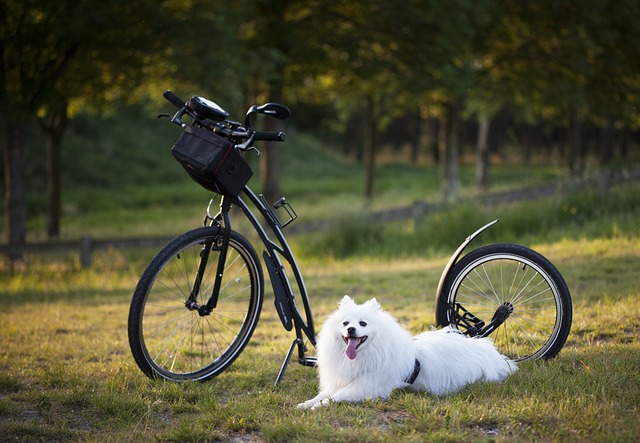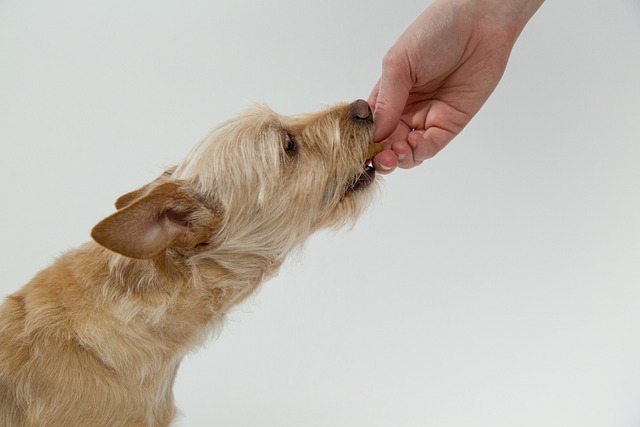To stop barking, use positive reinforcement dog training, rewarding the dog for quiet behaviour. This method encourages dogs to associate quietness with rewards, effectively reducing excessive barking.
Positive reinforcement dog training is a proven and humane approach to modify a dog’s behaviour. By rewarding the dog for staying quiet, it learns to control its barking and respond to commands. This approach creates a positive bond between the owner and the dog and helps in building trust and obedience.
When consistently applied, positive reinforcement training can effectively curb excessive barking, leading to a well-behaved and happier pet.
The Bark Behind The Behaviour
Identifying Types Of Dog Barks
Dogs bark for various reasons, and understanding the types of barks can help in addressing the behaviour. Common types include:
- Alert barking
- Fear barking
- Playful barking
- Separation anxiety barking
Root Causes Of Excessive Barking

Excessive barking in dogs can be triggered by underlying factors such as:
- Lack of mental stimulation
- Loneliness or boredom
- Territorial instincts
- Response to external stimuli
Fundamentals Of Positive Reinforcement
Find the key principles of positive reinforcement in dog training to effectively address excessive barking behaviour. By rewarding desired actions, you can encourage your dog to exhibit calmer behaviour and reduce instances of barking. Positive reinforcement methods focus on creating a positive association for your pet, leading to lasting behavioural changes.
Principles Of Positive Training

Positive reinforcement is a training method that involves rewarding desired behaviour instead of punishing unwanted behaviour. This approach is based on the principles of operant conditioning, which suggests that behaviour is shaped by consequences. When a behaviour is followed by a positive consequence, such as a treat or praise, the likelihood of that behaviour being repeated increases.
Positive reinforcement training involves identifying and rewarding desired behaviours. This can be done using treats, praise, toys or any other reward that the dog finds motivating. The key is to reinforce the behaviour immediately after it occurs so that the dog understands what they are being rewarded for.
Rewards Vs. Punishments: Effects On Behaviour
The use of rewards in positive reinforcement training has been shown to be more effective than the use of punishments in changing behaviour. Punishing a dog for unwanted behaviour, such as barking, can lead to fear and anxiety, which can worsen the behaviour.
In contrast, positive reinforcement training helps to build a strong bond between the dog and the trainer. The dog learns that good behaviour is rewarded, which encourages them to repeat it. This approach is not only more effective, but it is also more humane.
In conclusion, positive reinforcement training is a highly effective way to stop barking and other unwanted behaviours in dogs. By focusing on rewarding desired behaviours, this approach helps to build a strong bond between the dog and trainer while also promoting good behaviour. Remember to reinforce the behaviour immediately after it occurs and use rewards that the dog finds motivating.
Preparing For Training
Before starting your positive reinforcement training to stop your dog from barking, it’s essential to prepare yourself and your environment for success. Setting the stage for success and gathering the necessary tools and treats will ensure that your training sessions are effective and enjoyable for both you and your furry friend.
Setting The Stage For Success
Creating the right environment for training is crucial to achieving desired results. Choose a quiet and familiar space free from distractions where you and your dog can focus on the training exercises. Remove any potential triggers for barking, such as unfamiliar noises or people passing by, to set the stage for a productive training session.
Tools And Treats: What You’ll Need
For positive reinforcement training, you’ll need a few essential tools and treats to facilitate the learning process. Make sure to have a sturdy, comfortable leash and harness, as well as high-value treats that your dog finds irresistible. Treats should be small and easy to consume quickly, so they don’t interrupt the flow of training.
Basic Positive Reinforcement Techniques
Positive reinforcement dog training is an effective and humane way to stop barking behaviour in dogs. By using rewards and encouragement, this method helps to reinforce desirable behaviours while discourageing unwanted ones. When it comes to basic positive reinforcement techniques, there are several strategies that can be utilized to train a dog to stop excessive barking.
The Mark And Reward System

The mark and reward system involves using a distinctive sound or signal, such as a clicker or a verbal cue like “yes,” to indicate to the dog that they have performed the desired behaviour. This is immediately followed by a reward, such as a treat or praise, to reinforce the behaviour. By consistently pairing the mark with a reward, the dog learns to associate the mark with a positive outcome, leading to the repetition of the desired behaviour.
Mastering The ‘quiet’ Command

Teaching a dog the “quiet” command is an essential part of positive reinforcement training to stop barking. This command helps the dog understand that they should stop barking when prompted. When the dog is barking, wait for a moment of silence, then use the verbal cue “quiet” and immediately reward them when they comply. With consistent practice, the dog learns to associate the “quiet” command with a positive outcome and will respond by stopping barking when asked.
Advanced Training Strategies
Advanced Training Strategies are essential for effectively addressing excessive barking in dogs. While basic positive reinforcement techniques can lay the foundation, advanced strategies such as desensitization to triggers and counter-conditioning for calmness are crucial for long-term success.
Desensitization To Triggers

Desensitization involves gradually exposing your dog to the barking triggers in a controlled and safe environment. By starting with low-intensity triggers and pairing them with positive experiences, you can help your dog build a tolerance to the stimuli. This process should be slow and steady, ensuring that your dog remains relaxed throughout the exposure.
Counter-conditioning For Calmness
Counter-conditioning aims to change your dog’s emotional response to the barking triggers. By associating the triggers with positive outcomes, such as treats or playtime, you can teach your dog to remain calm and composed in the presence of the stimuli. Consistency and patience are key to successfully implementing counter-conditioning techniques.
Troubleshooting Common Issues
When training your dog to stop barking using positive reinforcement, it’s common to encounter some issues along the way. Understanding how to troubleshoot these issues can help you stay on track and achieve success in your training efforts.
Dealing With Setbacks
Setbacks can occur in any training process, and it’s important to remain patient and consistent. If your dog starts barking excessively again after making progress, revisit the basics of positive reinforcement. Ensure that you are consistently rewarding your dog for quiet, calm behaviour, and avoid inadvertently reinforcing barking by giving attention or treats during barking episodes. Additionally, consider any changes in your dog’s environment or routine that may be contributing to the setback and address them accordingly.
Adjusting Techniques For Stubborn Barkers
Some dogs may be more stubborn or resistant to training than others. If your dog continues to bark despite your efforts, it may be necessary to adjust your training techniques. Experiment with different types of rewards, such as high-value treats or toys, to find what motivates your dog the most. Additionally, consider increasing the frequency of training sessions and providing more opportunities for your dog to practice quiet behaviour in various situations. Consistency and patience are key when dealing with stubborn barkers, so remain persistent in your training efforts.
Maintaining Progress
Learn how to maintain progress in positive reinforcement dog training to stop barking. Find effective techniques and tips for consistently reinforcing good behaviour, helping your dog to break the habit of excessive barking.
Consistency Is Key
Consistency is the key to success when it comes to positive reinforcement dog training to stop barking. After you’ve trained your dog to stop barking on command, it’s important to continue reinforcing that behaviour. This means using positive reinforcement consistently and avoiding any situations that might trigger barking.
One way to maintain consistency is to establish a routine for your dog. This includes regular feeding times, exercise, and training sessions. By sticking to a routine, your dog will know what to expect and what is expected of them.
Beyond Barking: Ongoing Behavioural Training
Positive reinforcement dog training to stop barking is just one part of your dog’s overall behaviour. It’s important to continue training your dog beyond just barking. This includes teaching them basic obedience commands, like sit, stay, and come, as well as socialization skills.
Socialization is especially important for dogs, as it helps them learn how to interact with other dogs and people. By continuing to train your dog in these areas, you’ll not only maintain progress with their barking behaviour, but also create a well-behaved and well-adjusted companion.
Positive reinforcement dog training to stop barking requires patience, consistency, and ongoing training. By using positive reinforcement consistently and training your dog beyond just barking, you can maintain progress and create a well-behaved companion. Remember, consistency is key!
Additional Resources And Support
Find additional resources and support for positive reinforcement dog training to address excessive barking effectively. Access expert tips, video tutorials, and online communities for guidance and encouragement. Enhance your training journey with tailored solutions and professional insights to achieve lasting results.
- The Power of Positive Dog Training by Pat Miller
- Don’t Shoot the Dog! by Karen Pryor
- Decoding Your Dog by American College of Veterinary Behaviourists
- Association of Professional Dog Trainers (APDT)
- Victoria Stilwell’s Positively Dog Training
- Whole Dog Journal
Finding a Professional Trainer
For personal guidance, consider hiring a certified positive reinforcement dog trainer. Look for trainers accredited by the Certification Council for Professional Dog Trainers (CCPDT) or the International Association of Animal Behaviour Consultants (IAABC).
Remember, consistent practice and patience are key to successful barking behaviour modification.
Frequently Asked Questions
What Is The 3 Bark Rule?
The 3 bark rule is a training technique where you intervene after a dog barks three times to prevent excessive barking.
How Do I Stop My Dog From Continuously Barking?
To stop your dog from continuously barking, provide regular exercise, mental stimulation, and proper training techniques. Use positive reinforcement, ignore excessive barking, and seek professional help if needed.
What Is A Good Command For A Dog To Stop Barking?
The command “quiet” or “enough” can be effective in stopping a dog from barking. Consistency and positive reinforcement are key in training a dog to respond to these commands. Avoid using punishment or yelling, as this can reinforce negative behaviour.
Can Dogs Be Trained Out Of Barking?
Yes, dogs can be trained to reduce excessive barking through consistent positive reinforcement training methods.
Incorporating positive reinforcement is key for effective dog training. By using rewards and praise, barking behaviour can be successfully curbed. Consistency and patience are crucial for lasting results. Remember, a well-trained dog is a happy companion. Start implementing positive reinforcement techniques today for a quieter and happier home.
